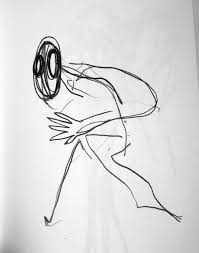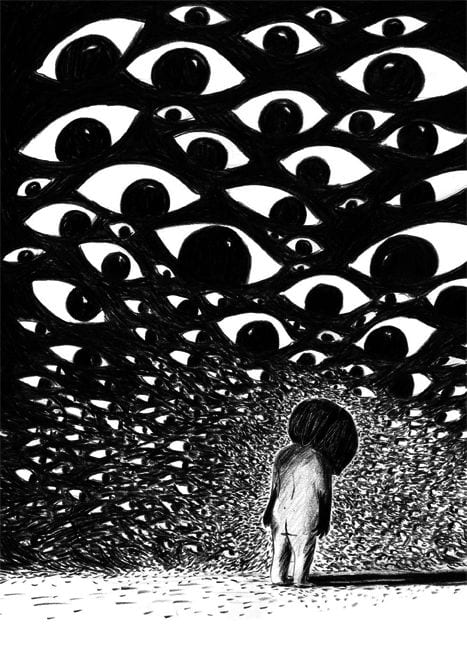Some non-fiction graphic novels leave an indelible mark on the reader, and Parenthesis is one of them. Written and illustrated by Élodie Durand, Parenthesis offers an unglamorous and tender account of living with and recovering from tumor-related epilepsy. Originally published in French under the title La Parenthèse by Editions Delcourt in 2010, Parenthesis is now available from IDW’s imprint Top Shelf Productions.
Durand establishes her non-linear, epistolary story of Judith with her cutting her hair short. These hair clippings fall in the shape of parentheses. Then the narrative jumps to a past meeting with a friend which serves as the inciting incident for Judith’s reconciliation with her past, of her self-image, and her relationships, chiefly with her mother. In fact, it is to her mother that the novel is addressed.
From the opening scene, the plot moves forward and back as the protagonist pieces together the memories she nearly lost. And with her parents’ help, Judith reconfigures events she thought she knew. Once her timeline encroaches on the present, Judith finally contends with the shame she expressed in the beginning. While this structure might seem confusing as described, it is not so on the page. Durand takes things slow, steeping the reader in the minutiae of her daily life.
MFR ON YOUTUBE (latest video)
Help us reach 5K Subs!
A Scattered Mind
Artistically, the book is not messy as such, but it isn’t polished. This choice seems intentional, to reflect the protagonist’s scattered mind and Durand’s stream of consciousness approach to the narrative. This style also reflects Judith’s view of herself while experiencing epilepsy and during her recovery; she saw herself as monstrous, if not without an identity entirely.

Durand’s use of intercut “self-portraits” illustrate her sense of self as they devolve in form sequentially from diagnosis to post-recovery. These self-portraits are genuinely disturbing, but I couldn’t look away. When you’re presented with something so authentic and unapologetic, you’re forced to interrogate your own self-image.
Moreover, it’s these self-portraits putting us in the mind of the author that help create sympathy when Judith does out-of-character things. At the start, Judith has symptoms she can’t explain. Therefore, she lashes out angrily at friends. Without proper context, you might be quick to call Judith rude and inconsiderate. But because of the schema from the art, you sympathize.
Later we learn that the increasing severity of her illness forces Judith to rely heavily on her parents—especially her mother—to perform basic daily tasks. This is undeniably devastating and relatable. As someone who is around the same age as Durand was at the time of her diagnosis, I understand the frustration stemming from loss of control, loss of a mature identity when you’ve only recently achieved independence.
Throughout Judith’s story, Durand maintains a strict black-and-white color palette, which gives the sense that the reader is looking into her secret sketchbook. Black-and-white also represents the past, and the haziness of memory. Here, as in the self-portraits, Durand seeks not to gloss up her past, but to simply piece it all together into a cohesive narrative. The effect, while tragic, is a mundane quality to the book as opposed to an over-the-top dramatic one. The reader comes to realize that life goes on despite and because of illness.

Universal And Particular
Reinforcing the private sketchbook (or diary) aesthetic is the lettering and layout. Durand’s cursive captions and minimal use of panel borders contribute to the stream of consciousness quality. However, while these choices make the whole reading experience specific and intimate, the crafting is clear. Durand has spent hard time making this graphic novel. According to her own caption narration, Parenthesis covers roughly ten years of Judith’s life.
And it’s a combination of the time, raw style and narration which make Parenthesis such an effecting, timeless and timely graphic memoir. The novel’s poignancy lies in its specificity. Ten years after its initial publication, Durand’s memoir has resonance for those who have struggled and those who have not.
For these reasons, I believe this is a must-read for fans of non-fiction graphic novels. You may find a bit of catharsis in the story, even if you weren’t looking for it. Who knows, you might discover a close for the parentheses of your own recovery.

